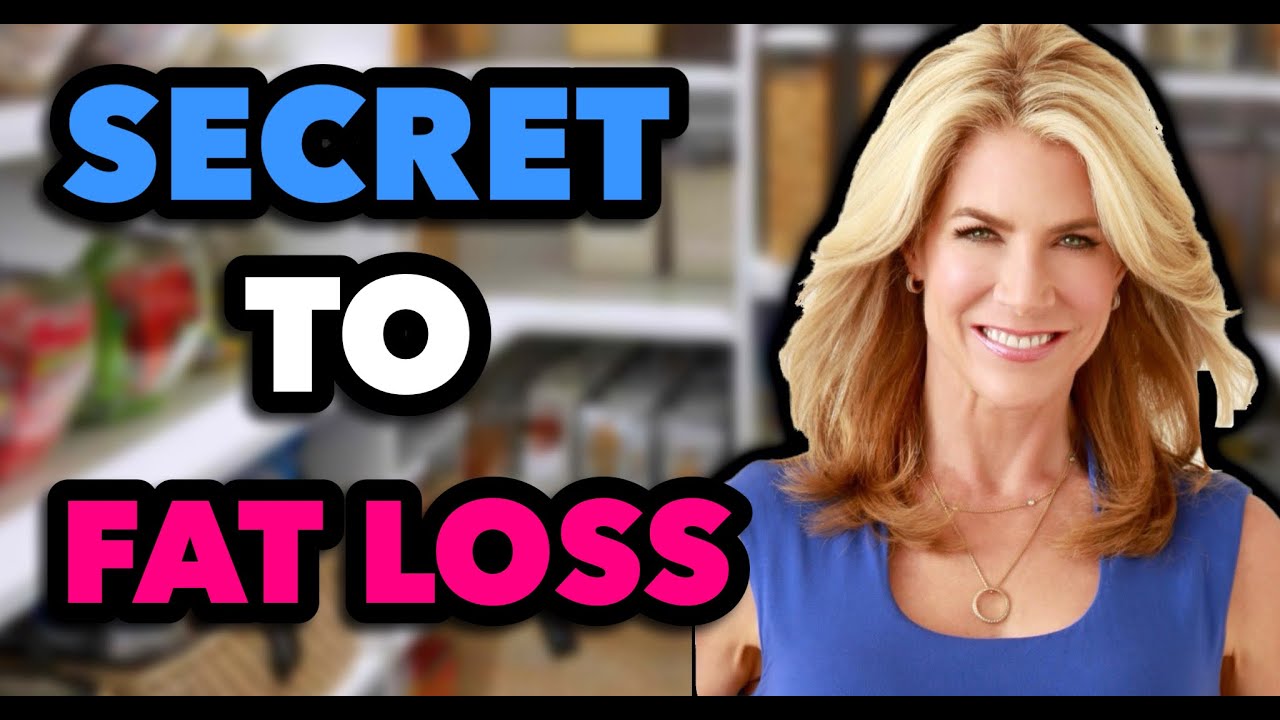If you feel like you’ve tried everything and you can’t get your weight to budge, or if you do lose the weight but it reappears in the blink of an eye, you might have a damaged metabolism.
The word metabolism gets used a lot these days, especially as shorthand for weight loss, but what does it really mean?
Metabolism simply refers to the chemical reactions throughout your body that change food into energy. That energy supports nearly every function your body carries out, including thinking, moving, and communication among your cells. At any given time, your body is regulating thousands of metabolic reactions.
What Can Negatively Impact Your Metabolism
Obviously, you want to keep your metabolism working at a steady pace. Among the culprits that can crash your metabolism include:
- A low-calorie diet
- Not getting enough protein
- Not exercising
- Not getting enough quality sleep
- Sugar (especially sugary beverages)
- Not strength training1
When you’ve been wrecking your metabolism for years by eating semi-starvation diets that don’t include sufficient protein, spending hours on the treadmill, and putting sleep on the back burner, everything suffers. Weight loss becomes a challenge, you’re often tired and cranky for no specific reason, and you struggle to show up as your best self at work and at home.
“When the metabolism is not working properly, we store too much fuel and we are unable to retrieve it,” says Alan Christianson, ND, in The Metabolism Reset Diet. “This leads to extra pounds and a host of other adverse effects—everything from brain fog to digestive problems to fatigue to diabetes to various forms of cancer.”
The good news, Christianson notes, is that your metabolism is not immovable; it can be repaired and healed.
How to Increase Your Metabolic Rate
The key to boosting your metabolism is to increase your metabolic rate, or the rate at which your body burns calories. Your body burns calories when you’re moving, of course; but sitting on the couch watching Netflix also involves your metabolism.
How? Your body needs energy to function, including beating your heart, circulating blood, growing and repairing cells, and adjusting hormone levels. That’s where your basal metabolic rate (BMR) comes in.
“BMR is the amount of energy the metabolism burns when you are at rest first thing in the morning on a completely empty stomach (12 hours of fasting) lying still in the dark,” says Jade Teta, ND, in Next-Level Metabolism.
Dr. Teta notes that BMR accounts for about 60-70% of metabolic energy use. Another 15-20% comes from something called non-exercise activity thermogenesis or NEAT.
“When you go get the mail, walk up steps, brush your teeth, walk from your car to the store, have sex, do the laundry, walk the dog, fidget, or toss and turn in your sleep, NEAT is happening,” says Dr. Teta in Next-Level Metabolism. The remaining metabolic impact comes from exercise.
Determine your BMR below.
My Metabolism Rescue Program has everything you need to get a primed and humming metabolism. This program includes a hands-on,-in-depth guide with easy-to-make fat-burning recipes, an exclusive masterclass where I provide simple and actionable steps for optimal health, and a curated supplement bundle to help you lose the weight, stop the weight regain and feel better fast. Learn more here.
5 Strategies for Boosting Your Metabolism
Based on these considerations, I’ve found five ways to boost your metabolism. This will help you burn fat, maintain steady energy and mood, and look and feel your best.
1. Optimize Your Thyroid Function
Your thyroid is a small, but powerful, butterfly-shaped gland at the base of your neck. Its primary function is to control your metabolism, transforming food into energy that your body uses to function.
To do that, your thyroid creates the hormones T4 and T3, which tell the body’s cells how much energy to use. A healthy thyroid continuously makes these hormones, releasing them and then making new hormones to replace them. This process keeps your metabolism humming along smoothly, supporting your BMR to make you a better fat burner.
However, if your thyroid produces too much or too little of these hormones, nearly every cell in your body is impacted.2 With hypothyroidism or an underactive thyroid, your thyroid doesn’t produce enough hormones. As a result, your metabolism slows down, leading to symptoms including weight gain, lethargy, depression, and constipation.3
One way to support your thyroid is by getting the right nutrients. In The Thyroid Connection, Amy Myers, MD, recommends the following nutrients to support a healthy thyroid:
- Selenium
- Zinc
- Iron
- Vitamin D
- Vitamin A
- Omega-3 fatty acids
- B vitamins
2. Eat Enough Protein
If you want to boost your metabolism, make protein your #1 priority. Studies show that eating optimal amounts of protein can help you lose fat, reduce body weight, preserve fat-free mass, and improve your overall body composition.4
One reason is that protein has a high-thermic effect, compared with carbs and fat. The thermic effect of food (TEF) is the increase in metabolic rate after you eat this food.5, 6
In other words, you burn more calories eating protein than you do fat and carbs. Other studies show that eating a higher-protein diet can also improve satiety, so you get full on fewer calories.7
Protein also slows down stomach emptying, keeping your hunger hormone, ghrelin, at bay.8 That means you’ll be far less likely to succumb to mid-afternoon snacking temptations, even when the office receptionist brings in those gooey, double-fudge brownies from the nearby bakery.
3. Lift Heavy Weights to Build Muscle
One of the biggest myths is that exercising more, or for longer stretches of time, boosts your metabolism. However, Dr. Teta notes that exercise only accounts for about 5% of the calories you burn.
That doesn’t mean you shouldn’t exercise! I call muscle your Metabolic Spanx for a reason: people who are physically fit tend to have higher BMR. Indeed, research shows that more muscle creates a better basal metabolic rate.9 You’ll burn more calories just going about your business every day.
What’s more, optimal amounts of muscle help you manage your blood sugar, build strength and stamina, support your joints, and control body fat. Building muscle can also help you lose weight faster and stop weight regain. Plus, exercise can also boost the thermic effect of your food.10
To optimize those results, have a highly thermic food, like protein, after you work out. A loaded smoothie helps you repair muscle, gives you that extra bang for your buck, and maximizes fat-burning.
4. Burst to Blast Fat
To build muscle, you’ll want to combine weight-resistance training with high-intensity interval training (HIIT), both of which can increase the thermic effect of food.
“HIIT is a kind of interval training, which means it uses rounds of exercise at varying intensity levels that include short bursts of effort,” says Alan Aragon in Flexible Dieting. “HIIT is a more efficient alternative to moderate-intensity steady-state training.”
HIIT makes you a better fat burner in several ways. Compared with other types of exercise, you burn more calories during a HIIT workout.11 Even better, you keep your metabolism revved up for hours after you exercise.12
5. Stabilize Your Blood Sugar
When it comes to optimizing your metabolism, balance is key.
“The metabolism is always adjusting to different circumstances,” says Jonny Bowden, Ph.D., in Living Low Carb. “Anything that stimulates it in one direction is ultimately met with a response in the opposite direction. The body is always seeking that state where the seesaw is evenly balanced, a state known in science as homeostasis.”
Earlier, I talked about how your thyroid must produce the right amounts of hormones to support your metabolic rate. Insulin, a hormone that regulates blood sugar levels, is another key player in metabolism.
When you improve your insulin sensitivity by keeping blood sugar and thus insulin levels regulated, you’ll lose fat more easily. You’ll also have less risk of disease, better brain function, fewer cravings, and less hunger.
On the other hand, when you’re insulin resistant (brought about by too much insulin), you’re more likely to have trouble losing weight because you’re storing, rather than burning, fat. Your metabolism uses carbs instead, and you get hit with cravings… and more weight.
“The higher your insulin levels are, the worse your insulin resistance,” says Mark Hyman, MD, in The Blood Sugar Solution. “Insulin resistance is the single most important phenomenon that leads to rapid and premature aging and all its resultant diseases, including heart disease, stroke, dementia, and cancer.”
The best way to stabilize blood sugar and support your metabolism? Eat by the plate. Make every meal the right combination of protein, healthy fat, and fiber. This magic trifecta keeps you full, focused, and feeling fabulous for hours. Bye-bye hunger and cravings!
Final Thoughts: Optimizing Your Metabolism
What you eat and how you move can significantly impact your metabolism. Focusing on sufficient protein during all your meals, weight resistance, HIIT, and optimizing your thyroid and blood sugar levels will optimize your metabolic rate.
As a result, your body runs more efficiently. You become a better fat burner, you have steady energy and mood, and you look and feel your best. Your metabolism remains balanced and healthy.
References:
- Moon J, Koh G. Clinical Evidence and Mechanisms of High-Protein Diet-Induced Weight Loss. J Obes Metab Syndr. 2020 Sep 30;29(3):166–173. doi: 10.7570/jomes20028. PMID: 32699189; PMCID: PMC7539343.
- Reed GW, Hill JO. Measuring the thermic effect of food. Am J Clin Nutr. 1996 Feb;63(2):164-9. doi: 10.1093/ajcn/63.2.164. PMID: 8561055.
- Westerterp KR. Diet induced thermogenesis. Nutr Metab (Lond). 2004 Aug 18;1(1):5. doi: 10.1186/1743–7075–1–5. PMID: 15507147; PMCID: PMC524030.
- Leidy HJ, Carnell NS, Mattes RD, Campbell WW. Higher protein intake preserves lean mass and satiety with weight loss in pre-obese and obese women. Obesity (Silver Spring). 2007 Feb;15(2):421–9. doi: 10.1038/oby.2007.531. PMID: 17299116.
- Kohanmoo A, Faghih S, Akhlaghi M. Effect of short- and long-term protein consumption on appetite and appetite-regulating gastrointestinal hormones, a systematic review and meta-analysis of randomized controlled trials. Physiol Behav. 2020 Nov 1;226:113123. doi: 10.1016/j.physbeh.2020.113123. Epub 2020 Aug 5. PMID: 32768415.
- McNab BK. What determines the basal rate of metabolism? J Exp Biol. 2019 Aug 6;222(Pt 15):jeb205591. doi: 10.1242/jeb.205591. PMID: 31262787.
- Denzer CM, Young JC. The effect of resistance exercise on the thermic effect of food. Int J Sport Nutr Exerc Metab. 2003 Sep;13(3):396-402. doi: 10.1123/ijsnem.13.3.396. PMID: 14669938.
- Falcone PH, Tai CY, Carson LR, Joy JM, Mosman MM, McCann TR, Crona KP, Kim MP, Moon JR. Caloric expenditure of aerobic, resistance, or combined high-intensity interval training using a hydraulic resistance system in healthy men. J Strength Cond Res. 2015 Mar;29(3):779-85. doi: 10.1519/JSC.0000000000000661. PMID: 25162652.
- Panissa VLG, Fukuda DH, Staibano V, Marques M, Franchini E. Magnitude and duration of excess of post-exercise oxygen consumption between high-intensity interval and moderate-intensity continuous exercise: A systematic review. Obes Rev. 2021 Jan;22(1):e13099. doi: 10.1111/obr.13099. Epub 2020 Jul 12. PMID: 32656951.





